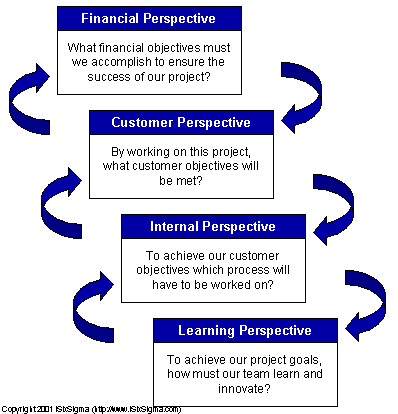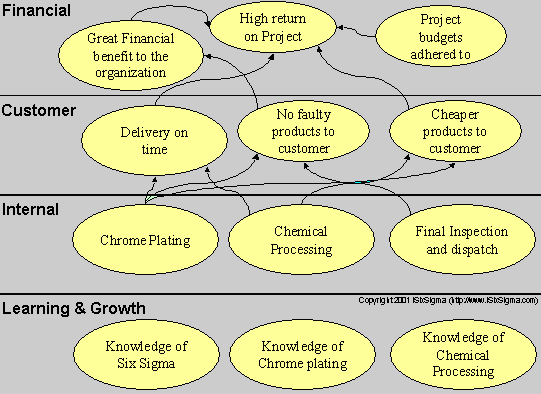
One of the crucial elements of the project charter in the define phase of a Six Sigma project is the selection of project metrics. Project metrics selected should reflect the voice of the customer (customer needs), as well as ensure that the internal metrics selected by the organization are achieved. Metrics selected should be simple and straightforward and meaningful. Metrics selected should create a common language among diverse team members.
When drafting metrics for a particular project one should consider how the metrics are connected and related to key business metrics. Typically there is no one metric that fits all the requirements for a particular situation.
Developing Project Metrics
The most common approach used by teams is to understand the problem statement, brainstorm metrics, and finally decide what metrics can help them achieve better performance. The team then reviews these metrics with executive management to ensure that they are in synergy with the overall strategy of the business, and an iterative approach may be utilized.
Care should be exercised in determining what is measured. Metrics should be based on what, in fact, needs to be measured to improve the process, rather than what fits the current measurement system. Metrics need to be scrutinized from the value they add in understanding a process.
Balanced Scorecard Approach to Metrics
Many Six Sigma professionals advocate the use of a balanced scorecard type of approach for the selection of project metrics as a method for ensuring that the project meets both customer and business needs. The balanced scorecard approach includes both financial and non-financial metrics, as well as lagging and leading measures across the four areas or perspectives: financial, customer, internal processes, and employee learning and growth. Lagging measures are those that are measured at the end of an event, while leading measures are measures that help as achieve the objectives and are measured upstream of the event.
Most balanced scorecard metrics are based on brainstorming, however the approach of brainstorming can have limited success in establishing sound metrics that have a good balance between lagging and leading measures.
Typical brainstormed balanced scorecard metrics utilized in Six Sigma projects can be summarized in the below. The primary issue in utilizing a scorecard is that it might not reflect the actual strategies applied by the team for achieving breakthrough in their project.
Financial
|
Customer
|
Internal Business Processes
|
Employee Learning and Growth
|
Instead of utilizing the Balanced Scorecard approach described above, the teams can employ a more effective method by answering the questions in the figure given below. This approach helps team members understand the objectives of the project from each of the four perspectives.

Once the team has brainstormed for each of the four perspectives, the various objectives that must be met by the project will be more clear. These objectives can then me mapped in a strategy map cutting across all the perspectives and projects of the organization. The arrows help in understanding the cause and effect linkages in the strategy. The next illustration shows an example of a strategy map applied.

Once the strategy map for the project is determined, the team can begin brainstorming appropriate metrics for each of the objectives and, while doing so, maintain a balance in selection between leading and lagging measures. This kind of an approach ensures that the team selects a set of metrics that are aligned with the strategy used by them on the Six Sigma Project. Metrics selected in this way not only ensure that appropriate metrics are developed but also help the team in the project planning and creates a purpose of direction for the team.
References
The Balanced Scorecard by Kaplan & Norton
Managing Six Sigma by Forrest W. Breyfogle